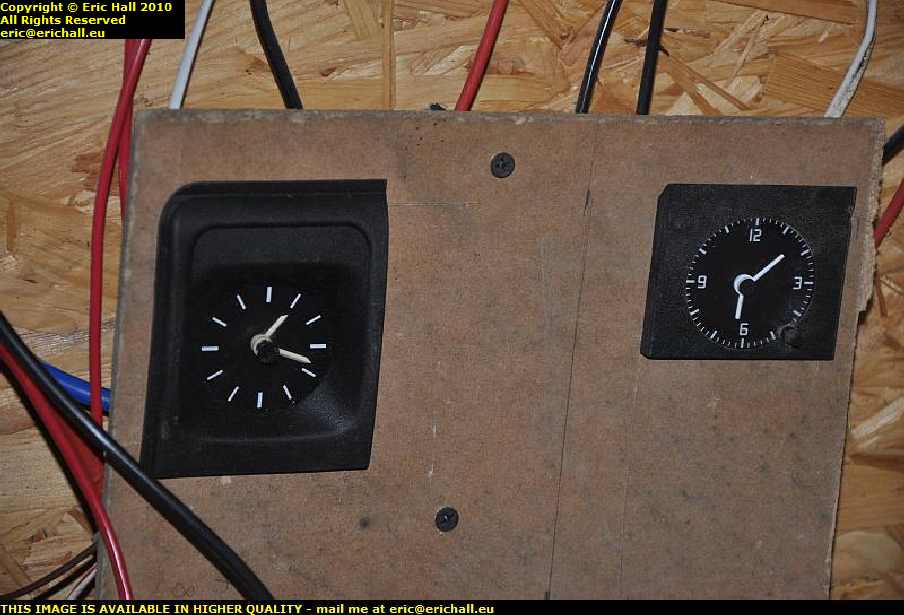I’ve finally fitted the most important piece in the jigsaw of my electrical system here (the wind turbine notwithstanding) and that it the electric water-heating mechanism.
How my system works at the moment is that there are two banks each of three solar panels and each bank is connected to the batteries via a charge controller. The two controllers are set up differently so that one cuts of when the batteries reach 14.1 volts and the other one cuts out when the batteries reach 14.15 volts. They both cut back in when the battery level drops to 13.4 volts or so. This avoids any overcharging of the batteries.
You can tell when the batteries are fully charged by the difference in solar charge received by each of the banks. If there’s a substantial difference then that will be because the one set at a lower charge will have cut out, just leaving the second one running. And if I have the fridge working then sometimes the difference can be substantial. On the 8th July for example one bank recorded 37.7 amp-hours whereas the other recorded 157.3 amp-hours, almost 2 kilowatt-hours of charge.
You can see therefore from this that there can be times when an enormous amount of solar energy is totally wasted. So what you can do is to rig up a system whereby once the batteries are fully-charged then instead of the system shutting down, all of the unwanted power is diverted into some kind of “dump load”.
 I’ve had plans for this for ages and a while ago I bought some 12-volt water heater elements. And today, even though it’s been a Bank Holiday and I don’t normally work, I’ve rigged up an old galvanised 50-litre ash can as a kind of ad-hoc immersion heater.
I’ve had plans for this for ages and a while ago I bought some 12-volt water heater elements. And today, even though it’s been a Bank Holiday and I don’t normally work, I’ve rigged up an old galvanised 50-litre ash can as a kind of ad-hoc immersion heater.
It’s going to have to be developed further of course. Electric elements floating around on wooden pontoons in open-topped galvanised ash cans full of water right close to the main access in the house is a recipe for some kind of disaster sooner or later and one of the reasons why I’ve been holding off from fitting this dump load is because I’ve been looking for some kind of more substantial and correct recipient but in the absence of anything more positive I can’t be waiting for ever. The piazzo buzzer on there by the way is to let me know when the circuit opens up
 The proof of the pudding is of course in the eating and now that this system is wired in I can put a 12-volt clock in line to tell me how long the circuit is open.
The proof of the pudding is of course in the eating and now that this system is wired in I can put a 12-volt clock in line to tell me how long the circuit is open.
And so while the clock on the right (from a Renault Clio by the way) keeps the time, the one on the left (from a Vauxhall Cavalier) tells me how long I’ve been heating the water.
1h20 (it was about 1h35 by the time it finished) may not seem a lot to anybody and the water didn’t get all that hot but on day one with 50 litres of water in what is effectively a large open bucket – that has to be progress. Just imagine that in a 50-litre sealed tank with loads of insulation around it.
And I had a visitor this afternoon – a guy who I met the other day and wanted to discuss solar panels and wind turbines. He was here for about three hours and we had quite a lengthy chat.
And that’s not the only visitor I had today either. The windows up here are wide open and there’s this lovely gale blowing right through here, and it’s just blown this huge, enormous green thing that looks like a cricket right into the attic. We had quite a chase around the place and eventually I caught him in a plastic box and threw him back outside.
You’re going to have to add a thermal cutout as well or there’s a chance when you’re away for a day or so that the system could go into meltdown.